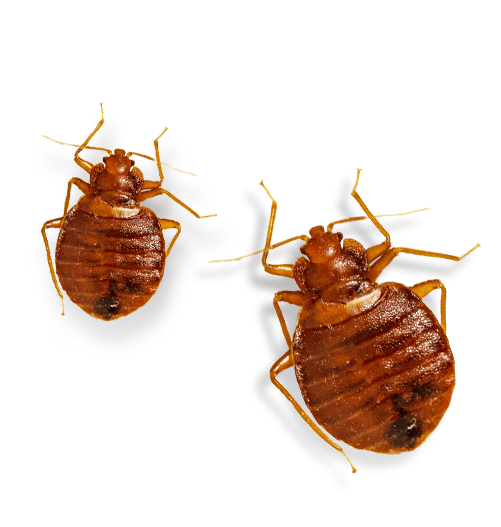Comprehensive A1 Bed Bug Extermination in Houston Location
Wiki Article
Understanding the Lifecycle of Insects for Targeted Control Methods
Recognizing the lifecycle of pests is a fundamental element of efficient pest administration techniques. By comprehending the numerous stages of development that pests undergo, an extra precise and targeted approach can be taken on to regulate their populaces. This understanding not only clarifies the susceptabilities within the parasite lifecycle yet additionally leads the method for executing tactical steps that can disrupt their growth and recreation cycles. With a deeper understanding of how parasites prosper and develop, tailored control strategies can be designed to resolve details points in their lifecycle, ultimately leading to even more successful pest monitoring results.Relevance of Comprehending Parasite Lifecycle
Comprehending the lifecycle of parasites is essential for creating effective and targeted control techniques in parasite management. By understanding the various stages a parasite experiences from egg to grownup, insect control professionals can recognize weak spots in the lifecycle where intervention can be most successful. Understanding when larvae are most active can aid figure out the optimal timing for applying larvicides. In addition, understanding the life expectancy of a parasite species can help in anticipating populace development patterns and possible infestation risks.Moreover, acknowledging the specific environmental problems essential for each and every phase of the parasite's lifecycle can lead choices on environment adjustment or exclusion methods to disrupt the lifecycle and reduce parasite populaces. This understanding makes it possible for pest monitoring specialists to carry out positive measures as opposed to counting exclusively on reactive treatments, leading to even more lasting and long-term insect control solutions. Inevitably, an extensive understanding of bug lifecycles equips insect control practitioners to customize their strategies effectively, maximizing and minimizing ecological impacts control end results.
Secret Stages in Parasite Growth
To efficiently apply targeted control strategies in pest management, an important element lies in comprehensively determining and comprehending the essential phases in bug advancement. Insect advancement usually consists of several key phases that are critical for their lifecycle and monitoring.

Vulnerabilities in Parasite Lifecycle
Throughout the various phases of a pest's lifecycle, distinctive susceptabilities arise that can be tactically targeted for effective control actions. One vital vulnerability hinges on the egg stage, where parasites are typically extra vulnerable to particular pesticides or biological control representatives due to their soft outer shell, making them much easier targets for treatment. Additionally, the larval or nymph phase offers susceptabilities as pests undergo fast development and growth, calling for high power usage that can be manipulated by interrupting their food sources hop over to these guys or introducing growth inhibitors. Pupal stages, defined by stability and transformation, provide a window for targeted control with physical barriers or certain therapies that hinder successful development. Adult bugs, while extra durable due to their reproductive capability, can still be susceptible during mating or egg-laying activities, which can be interfered with via scent catches or sanitation methods. Comprehending these susceptabilities in the pest lifecycle is important for creating efficient and specific control techniques that effectively manage bug populaces while reducing environmental effect.Carrying Out Targeted Control Measures

Executing targeted control procedures typically includes a multi-faceted strategy. This may include environment modification to make the atmosphere much less hospitable to insects, such as getting rid of standing water for mosquito control or sealing entrance factors for rodents. Furthermore, organic control approaches can be utilized, where natural killers or pathogens are presented to keep pest populations in check.
Integrated Insect Administration (IPM) strategies that combine different control actions in a coordinated and sustainable manner are typically the most effective in achieving lasting insect administration goals. By applying targeted control steps based on a complete understanding of insect lifecycles, bug populaces can be efficiently controlled while minimizing risks to human wellness and the atmosphere.
Improved Pest Monitoring Practices

Furthermore, the consolidation of organic control agents, such as natural killers or pathogens of bugs, can help decrease dependence on chemical pesticides and advertise a more well balanced ecosystem. Executing physical obstacles and traps can likewise belong to boosted insect monitoring techniques, using non-toxic and targeted solutions for insect control. In addition, making use of pheromones and various other semiochemicals can visit this site right here interfere with pest breeding patterns and communication, resulting in lowered pest populations gradually.
Verdict
In conclusion, understanding the lifecycle of insects is critical for effective pest management techniques. By determining crucial phases in bug development a fantastic read and vulnerabilities in their lifecycle, targeted control steps can be carried out to lessen bug populaces. Improved parasite monitoring techniques can aid lower the reliance on broad-spectrum chemicals and advertise even more sustainable and eco-friendly parasite control approaches. This expertise plays a crucial function in preserving healthy environments and agricultural productivity.Understanding the lifecycle of bugs is essential for developing effective and targeted control strategies in parasite management. By comprehending the different stages a bug goes with from egg to grownup, parasite control specialists can recognize at risk points in the lifecycle where intervention can be most effective. Eventually, an extensive understanding of pest lifecycles encourages pest control experts to tailor their approaches efficiently, making best use of and decreasing ecological influences control end results.
By applying targeted control measures based on a comprehensive understanding of insect lifecycles, insect populations can be effectively controlled while minimizing dangers to human health and wellness and the environment.
By determining vital stages in bug growth and susceptabilities in their lifecycle, targeted control steps can be carried out to decrease pest populations.
Report this wiki page